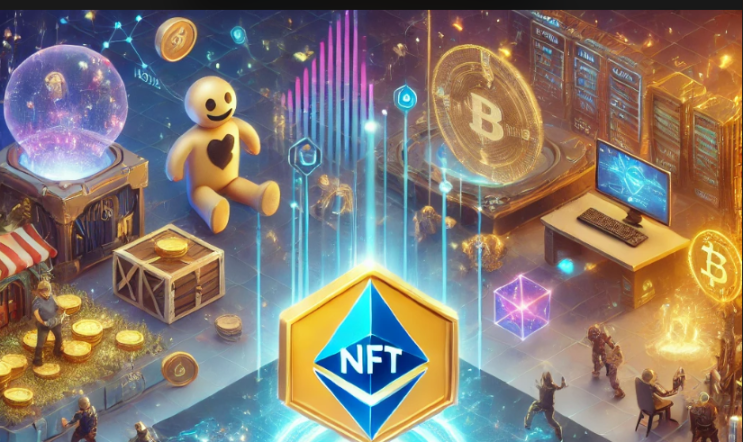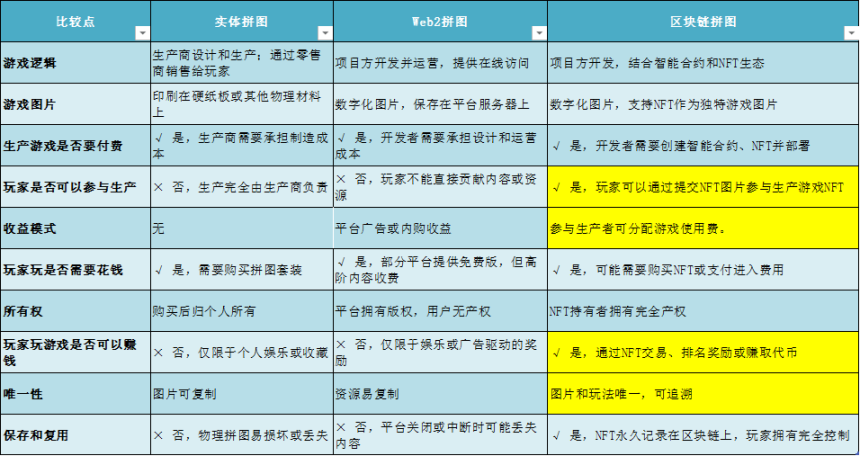Can NFT holders earn income during the holding period rather than at the time of sale? Can Web3 co-creation be applied to game NFTs?
Written by: DawnXue

NFTs were undoubtedly the focus of the last cycle. Whether it was crypto art, sports collectibles, or in-game assets, NFTs left a successful mark. However, after the glory of PFP projects like CryptoPunks and BAYC, NFTs ultimately concluded with the hype surrounding virtual land in the metaverse. Today, these once-hot assets are gradually being forgotten.
The Price Bubble and Limited Use Value of the NFT Market
According to historical data from Opensea, blue-chip NFTs like BAYC and Doodles have dropped over 90% from their peak prices. This phenomenon is not only lamentable but also prompts us to reflect on the crux of the NFT market:
- Price bubble burst. During the last market boom, NFT prices were significantly inflated. However, as market enthusiasm waned, the excessively high prices led to a sharp decline in buyers and a substantial drop in trading volume. Similar to other speculative markets, NFTs experienced price surges followed by rapid corrections, lacking subsequent narratives or value support, which caused investor confidence to collapse.
- Limited use value. Many NFTs have overly singular functions, existing merely as speculative tools, with very few NFTs possessing long-term use value. For example, PFP (profile picture) NFTs, aside from representing users' social identities, lack more practical uses; while collectible NFTs have aesthetic value, their appeal and liquidity are difficult to sustain.
Co-creation and Revenue Sharing of NFTs
The core of Web3 is co-creation and revenue sharing. Looking back, most NFT issuances and revenues have primarily concentrated in the hands of individual creators or platforms:
- PFP NFTs: Such as Punks and BAYC, whose revenues are exclusively enjoyed by the project parties.
- Sports collectibles: NFTs represent specific sports moments, with issuance and circulation rights controlled by the platform.
- Virtual land: Platforms like Decentraland and The Sandbox dominate the issuance of land.
Although there have been some cases of user-customized assets in the metaverse, overall, the market has yet to truly achieve deep co-creation between players and platforms.
Exclusive vs. Non-exclusive Use: New Ideas for NFT Utilization
Currently, most NFT usage is exclusive: only holders can use or authorize others to use them individually. This model limits the popularity of NFTs and weakens their revenue potential. The exclusivity of NFT usage is akin to the early stages of computer development, which primarily revolved around hardware like chips; you can buy, sell, or lease (NFTs already have relevant technical support), but it is not suitable for large-scale adoption.
In contrast, non-exclusive use is more open. The same NFT resource can be authorized for use by multiple parties, generating broader value. For example, the Little Ghost NFT allows brands to launch co-branded products, enabling multiple consumers to purchase and pay a premium for the products simultaneously, thus endowing the NFT with broader market value.
What other valuable assets can this NFT container hold? When these valuable NFTs are authorized for simultaneous use by multiple people, can NFT holders earn income during the holding period rather than at the time of sale? Can Web3 co-creation be applied to NFTs? Can dormant NFTs in wallets be awakened?
NFT games may be a breakthrough. NFTs are powerful containers that can hold not only in-game assets but also the games themselves.
NFT Games
Why start with games? The gaming industry often leads new technologies, whether it’s the emergence of computers (text adventure games, graphical interface games), the development of PC gaming (mouse and keyboard games, multiplayer online games), or the popularity of button phones (Snake and other button games) and smartphones (Angry Birds touch controls, Temple Run tilt and move). Games have played a key role in these processes, leading innovations in user experience and interaction methods.
And it needs to start with mini-games. Because mini-game development costs are low and can iterate quickly; mini-games are easy to pick up and have simple gameplay, making them more suitable for a broad user base and highly shareable.
The High Threshold of Game Development
Although mini-game development costs are low, most players, aside from programmers, lack coding skills, making it nearly impossible for these players to independently develop even seemingly simple mini-games, let alone add game creativity. However, platforms can collaborate with players for co-creation and share revenues, as platforms have technical development capabilities while players have various NFTs and resources.
Co-creation in Games
Not all games are suitable for co-creation; some games are very suitable, such as puzzle games. Because different images create different games.
Co-creation ideas using puzzle games as an example:
- The platform develops the basic logic of the game and opens up NFT image upload functionality.
- Players can upload NFT images from their wallets, and the platform generates a customized puzzle game.
- Each puzzle game can be minted as an NFT, and game players enter the game through a ticket mechanism, with revenues proportionally distributed to image providers and the platform.
This model achieves a division of labor and collaboration between developers and users while avoiding redundant development. Players using their own NFTs can prevent piracy and enhance the combinability and use value of NFTs.
Below is a comparison of physical puzzles, web2 puzzles, and blockchain puzzles using puzzle games as an example, highlighting the advantages of blockchain puzzles.

Awakening Dormant NFTs
Certain long-dormant NFTs may be revitalized by a successful game, while new NFTs can also spread widely among users through co-creation models. Through this gameplay, NFTs are no longer merely collectibles or speculative tools but assets with practical value.
The Financial Nature and Revenue Model of NFT Games
Financial nature is one of the core characteristics of blockchain games. NFT games can not only provide entertainment value but also form a sustainable revenue distribution mechanism:
- Initial funding and reward mechanism
Users pay initial funding when creating games to attract players. Players participate in the game through ticket fees and rewards are distributed based on rankings.
- Revenue distribution
The revenue generated after the issuance of game NFTs can be proportionally distributed to the platform and content contributors, and holders can also obtain dynamic income through usage rights during the game, rather than solely relying on the premium at the time of NFT sale.
- In addition, conditional project parties can also add points, airdrops, etc., to increase the financial nature of the game.
Wide Applicability of the Game NFT Co-creation Model
Apart from puzzles, the co-creation model of games is also applicable to other games, which should have the following characteristics:
- Diversity generated by simple modifications: The basic rules remain unchanged, but users can upload images or modify maps to create unique experiences.
- Low development costs: No complex logic is needed; image replacement and parameter adjustments can complete most game content.
- Easy to share and spread: Each version created by players may attract specific interest groups.
Beyond these games, this model can even extend to other types of assets.
Of course, NFTs and games complement each other, and games may also advance with the momentum of NFTs. In summary, NFTs have not been disproven; we may have only seen the tip of the iceberg of this new frontier, and more exploration is needed by builders.
免责声明:本文章仅代表作者个人观点,不代表本平台的立场和观点。本文章仅供信息分享,不构成对任何人的任何投资建议。用户与作者之间的任何争议,与本平台无关。如网页中刊载的文章或图片涉及侵权,请提供相关的权利证明和身份证明发送邮件到support@aicoin.com,本平台相关工作人员将会进行核查。




